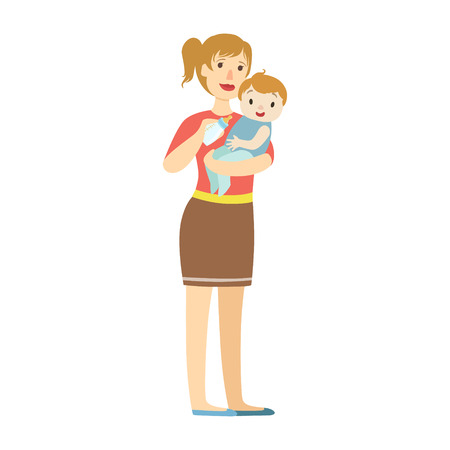1. Why Reading to Babies Matters
Reading to your baby from an early age is one of the best ways to support their development. Even though newborns won’t understand the words right away, they are absorbing sounds, tones, and rhythms that will help them develop language skills later on. Plus, reading together creates a special bonding experience between you and your little one.
Benefits of Reading to Babies
There are several key benefits to introducing books to babies early in life. Here’s why reading matters:
| Benefit | Description |
|---|---|
| Language Development | Hearing words and sounds helps babies build the foundation for speech and communication. |
| Bonding Time | Cuddling up with a book strengthens the emotional connection between parent and baby. |
| Cognitive Growth | Books stimulate curiosity, memory, and problem-solving skills as babies grow. |
| Sensory Stimulation | Bright colors, textures, and different sounds in books engage a baby’s senses. |
The Power of Repetition
You might notice that babies love hearing the same stories over and over again. This repetition is actually beneficial! It helps reinforce language patterns, improves memory, and gives your baby a sense of familiarity and comfort.
How Early Can You Start?
You can start reading to your baby as soon as they are born! Even newborns benefit from hearing your voice. Soft, rhythmic reading can soothe them and create a calming bedtime routine.
2. How to Choose Age-Appropriate Books
Selecting the right books for your baby can make a big difference in their early development. Babies go through different stages of learning, and the best books will grow with them, offering engaging textures, bright colors, and interactive elements that stimulate their senses.
Books for Newborns (0-3 Months)
Newborns have limited vision and are most attracted to high-contrast images. Simple, bold patterns in black and white or bright primary colors can help capture their attention.
| Feature | Why It’s Important |
|---|---|
| High-contrast images | Helps develop visual focus |
| Simple designs | Avoids overstimulation |
| Soft fabric books | Safe and easy to hold |
Books for Young Infants (3-6 Months)
At this stage, babies begin to reach for objects and explore with their hands and mouths. Books with different textures and interactive elements encourage sensory exploration.
- Touch-and-feel books: Introduce various textures for sensory stimulation.
- Sturdy board books: Durable enough for little hands and mouths.
- Mildly interactive books: Lift-the-flap books can start engaging curiosity.
Books for Older Infants (6-12 Months)
As babies develop better motor skills and begin babbling, they enjoy books that encourage interaction. Rhyming stories, simple narratives, and interactive elements keep them engaged.
- Rhyming and repetitive text: Helps with language development.
- Larger board books: Easy for little hands to grab and turn pages.
- Noisy or sound books: Simple sounds can reinforce cause-and-effect learning.

3. Top Book Recommendations for Newborns to 6 Months
Choosing the right books for newborns can help foster early bonding and support their developing vision and listening skills. At this stage, babies respond best to high-contrast images, simple patterns, and soothing rhythms. Below is a curated list of books that are perfect for babies from birth to six months old.
High-Contrast Books
Newborns have limited vision and see best in black-and-white or high-contrast images. These books help stimulate their visual development.
| Book Title | Author | Description |
|---|---|---|
| Look, Look! | Peter Linenthal | A bold black-and-white book with simple, eye-catching illustrations designed to capture a babys attention. |
| Black & White | Tana Hoban | A fold-out book featuring high-contrast images that can be placed near a babys crib for easy viewing. |
| Hello, Baby Animals | Ddugoon | A visually engaging book with strong contrast and adorable baby animal illustrations. |
Lullaby and Rhyming Books
The rhythm and melody of lullabies help soothe babies while introducing them to the sounds of language. Reading these books aloud creates a comforting bedtime routine.
- I Love You Through and Through by Bernadette Rossetti-Shustak – A sweet rhyming story about unconditional love, perfect for reading before naps or bedtime.
- The Going to Bed Book by Sandra Boynton – A charming bedtime story with playful rhymes that gently ease babies into sleep.
- You Are My Sunshine by Jimmie Davis – A board book version of the beloved lullaby, great for singing along while cuddling your little one.
Tactile and Interactive Books
Sensory exploration is an important part of a babys early learning experience. Books with textured pages or interactive elements encourage engagement.
- Puppy Tails by Jellycat – A soft fabric book with different textures for tiny hands to explore.
- Tails by Matthew Van Fleet – A fun touch-and-feel book featuring various animal tails with interactive flaps and textures.
- Moo, Baa, La La La! by Sandra Boynton – An entertaining board book filled with silly sounds that delight young listeners.
Selecting books tailored to a newborns developmental stage makes reading time more engaging and beneficial. Whether its through high-contrast images, soothing rhymes, or interactive textures, these books provide an excellent start to a lifelong love of reading.
4. Best Books for Babies 6 to 12 Months
Between 6 and 12 months, babies become more curious about the world around them. They start reaching for objects, exploring textures, and responding to familiar words and sounds. Choosing books with interactive elements, simple language, and recognizable objects can help capture their attention and encourage early language development.
Interactive Books to Keep Baby Engaged
Books with flaps, touch-and-feel textures, or mirrors can make reading a fun sensory experience. Babies at this stage love to grab, pat, and explore different materials, making interactive books a great choice.
| Book Title | Features |
|---|---|
| Where’s Spot? by Eric Hill | Lift-the-flap book that encourages curiosity and engagement |
| Pat the Bunny by Dorothy Kunhardt | A classic touch-and-feel book with various textures for sensory exploration |
| Moo, Baa, La La La! by Sandra Boynton | A fun rhyming book introducing animal sounds in an engaging way |
| Mirror Me! by Baby Einstein | A board book with mirrors to encourage self-recognition and interaction |
The Power of Simple Words and Repetition
Babies at this stage begin recognizing familiar words and enjoy hearing them repeated. Books with simple language and rhythmic patterns help strengthen their understanding of speech.
- Brown Bear, Brown Bear, What Do You See? by Bill Martin Jr. – A repetitive structure that helps babies anticipate what comes next.
- The Very Busy Spider by Eric Carle – Simple storytelling with tactile web illustrations for engagement.
- Llama Llama Nighty-Night by Anna Dewdney – A soothing bedtime story with easy-to-follow rhymes.
Picturing Familiar Objects for Learning
Babies love looking at pictures of everyday objects they recognize from their surroundings. Books featuring real-life images or bold illustrations help them make connections between words and objects.
- First 100 Words by Roger Priddy – A colorful book filled with photos of common objects to build early vocabulary.
- Hello, World! My Body by Jill McDonald – Introduces body parts using bright illustrations and simple explanations.
- I Love You Through and Through by Bernadette Rossetti-Shustak – Encourages emotional connection through familiar actions and expressions.
Selecting books that encourage interaction, repetition, and recognition will keep your baby engaged while fostering early literacy skills. Reading together during this stage builds a strong foundation for communication and bonding.
5. Tips for Making Reading Time Fun and Engaging
Reading with your baby is not just about the words on the page—it’s about creating a joyful and interactive experience. Here are some practical tips to help you make reading time both fun and engaging.
Incorporate Reading into Daily Routines
Consistency is key when it comes to building a love for books. Try weaving reading into everyday moments:
- Morning Storytime: Read a short book after breakfast to start the day with a positive routine.
- Naptime Wind-Down: A soothing story can help signal that its time to rest.
- Bath Time Books: Waterproof books add fun to bath time while reinforcing language skills.
- Bedtime Stories: Ending the day with a book helps create a comforting nighttime ritual.
Use Expressive Reading Techniques
Your voice and facial expressions can bring stories to life, making them more engaging for your baby. Try these techniques:
| Technique | Description |
|---|---|
| Change Your Voice | Use different voices for characters to make the story more entertaining. |
| Add Sound Effects | Mimic animal sounds, vehicle noises, or environmental sounds to capture attention. |
| Pace Your Reading | Slightly exaggerate pauses and emphasize certain words to build excitement. |
| Mimic Emotions | If the character is happy, smile; if they are surprised, widen your eyes! |
Encourage Interaction During Storytime
The more involved your baby is in reading, the more they’ll enjoy it! Here’s how you can encourage participation:
Select Interactive Books
“Touch-and-feel”, lift-the-flap, and sound books engage babies by stimulating their senses.
Ask Simple Questions
You can ask questions like, “Where is the puppy?” or “What sound does a cow make?” even if your baby isn’t talking yet.
Lend Them the Book
If your baby reaches for the book, let them hold it and turn the pages—it helps develop motor skills and fosters curiosity.
Songs and Rhymes
Singing along with rhyming books makes reading extra fun and helps babies recognize patterns in language.
By making reading an interactive and enjoyable experience, you’re setting the stage for a lifelong love of books. Keep experimenting with different techniques to see what excites your little one the most!


